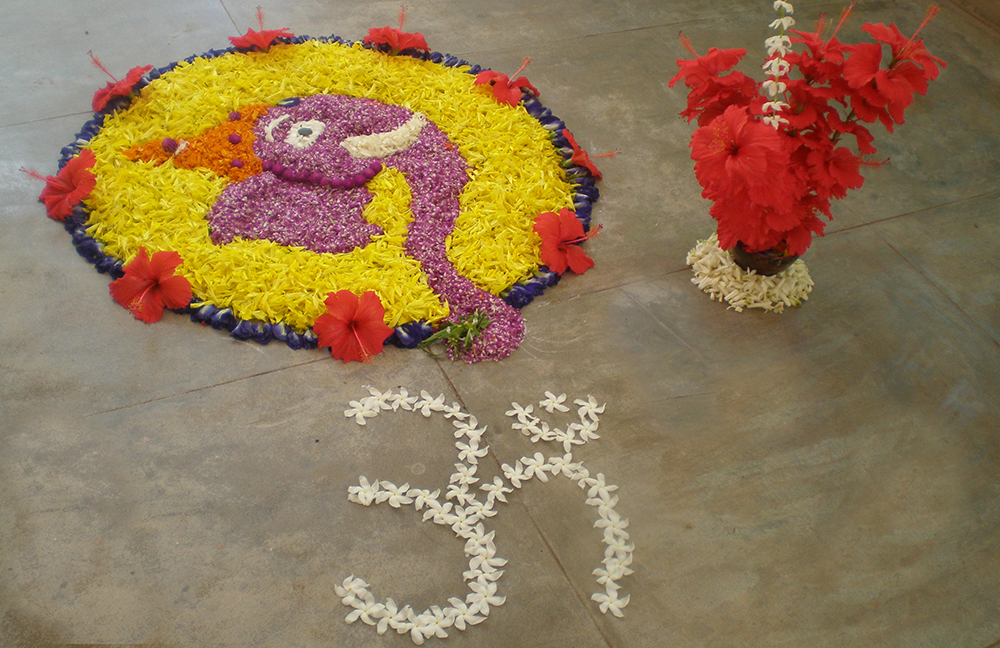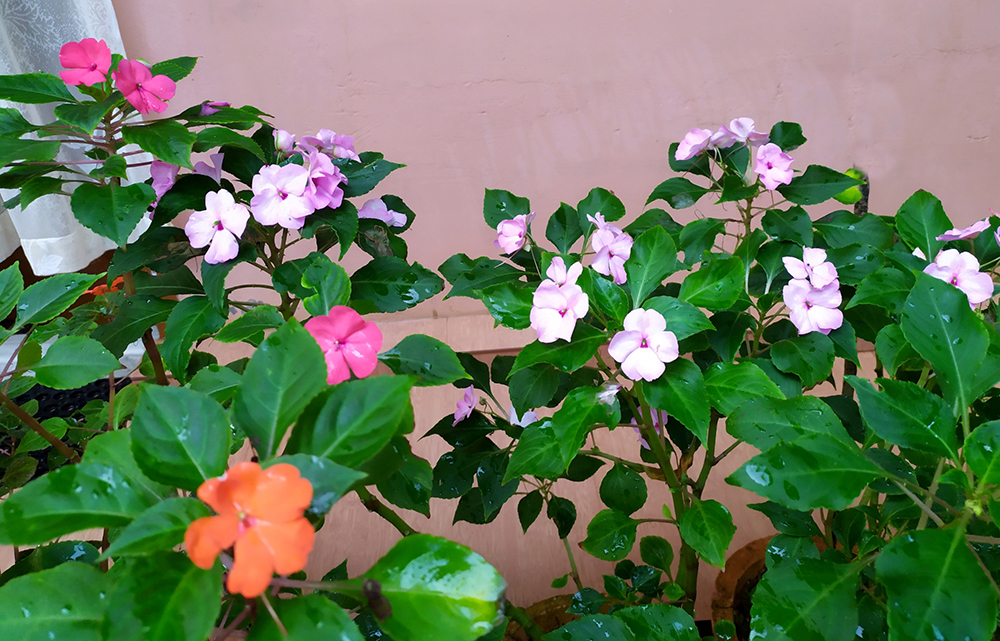Onam: A Natural Flower Festival
Indian festivals celebrate the unity of the trinity -divinity, nature and humans. Festivals and rituals have been a means of promoting this wisdom.
In the concept of Dasapushpam, we saw how in Sita Devi’s name, during the holy Ramayana month, we nurture the auspicious ten plants.
The ten day long Onam festival is yet another occasion for promoting growing of flowers. And that is through Pookkalams, or the floral mats.
Young men, women and children gather colorful flowers everyday on those ten days and make floral mats in front of temples and houses. This group activity creates a joyous pastime for the family members and the neighbors.
Geometric designs, or drawings of gods or of some dramatic moments in myths or history are first drawn on the floor. Flowers or the petals of different color flowers are then filled in. And then the design comes to life as it were. It is an activity that creates something new out of things in hand.
Long time residents of Amritapuri say, in the early days not even a single flower was seen here. The island’s closeness to the saline water of the sea would not allow any gardening. But now, see how Amma has transformed Amritapuri into a real flower-basket!
Right now we can see every day a number of new flowers blooming in the ashram premises. Some of them raised by human hands, and others growing all on their own.
The perennial flowers mostly used for puja are all in full bloom: Shankhu (conch) pushpa can be seen in its bushy vines in two colors. Blue ones by the dishwashing area on the side of the big hall, by one of the Nachiketa domes, by the international office, so on; the white ones in Sripura quadrangle for example. Tecchippu and Nandyarvattams are always there like sunshine in day. The beaming Kolambi yellows are unstoppable as it were! Aralis are swaying in wind and kissing the skies.
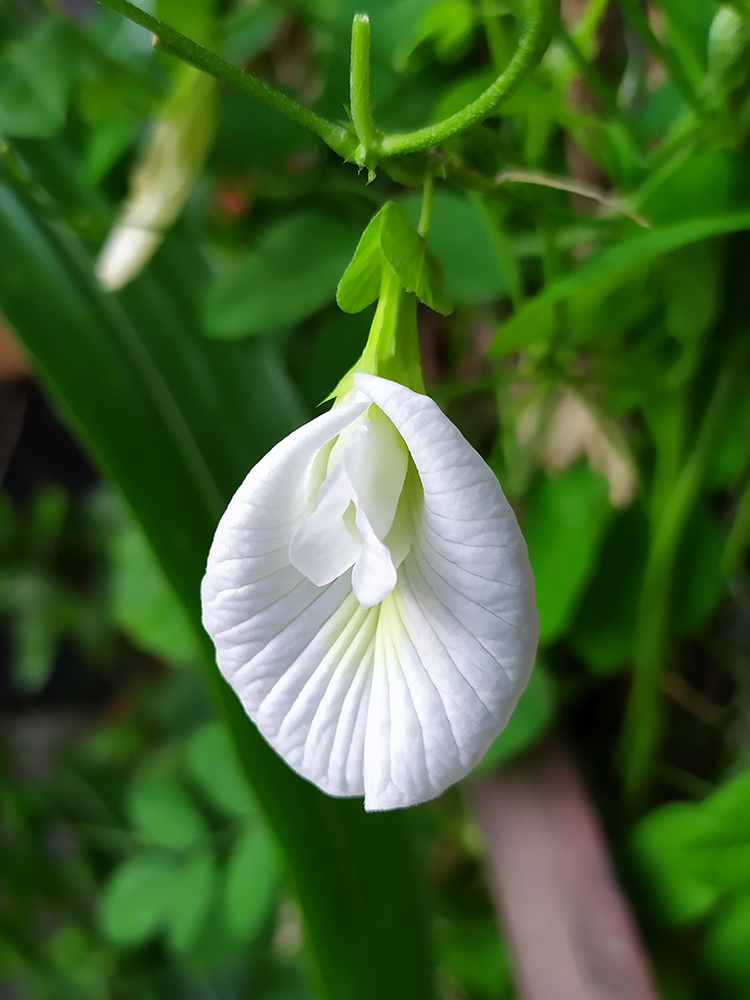
White Shankhu 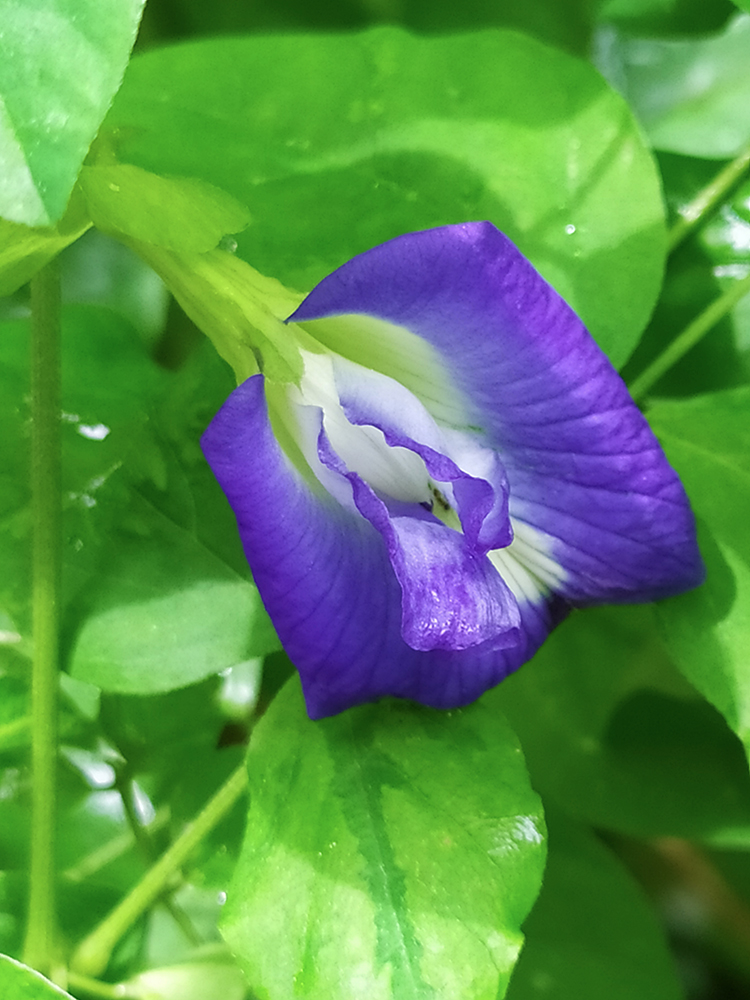
Blue Shankhu 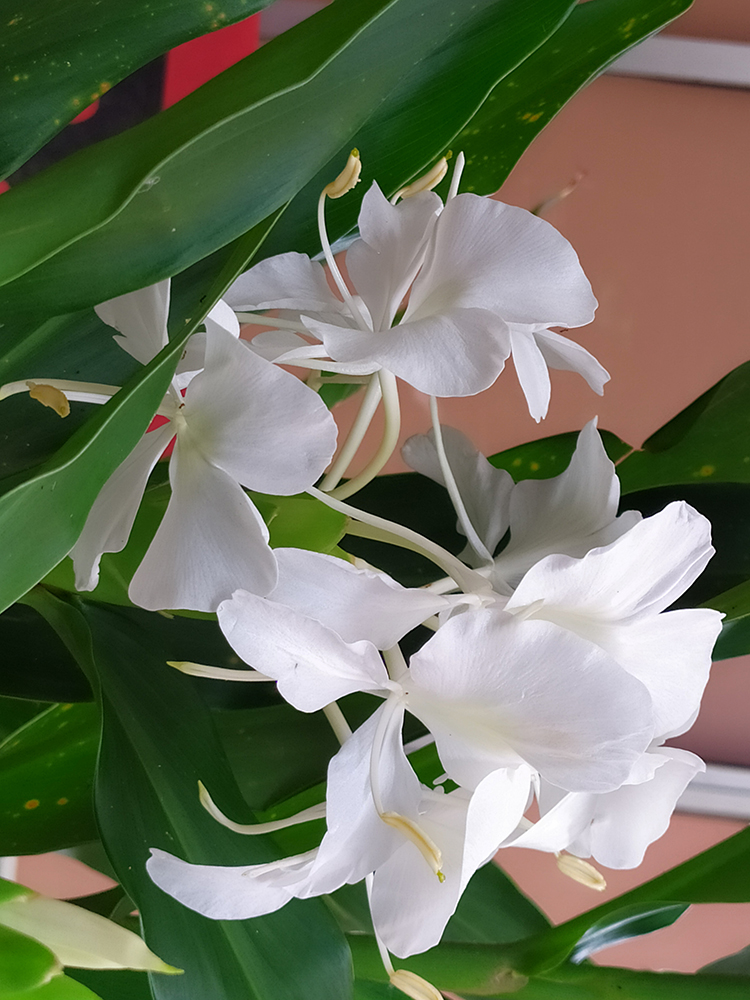
Saugandhika 
Kolambi
There are more than 30 references to flowers in the Lalita Sahasra Nama that we chant regularly. The hibicus or Japakusuma (Devi’s glow is compared to it in the dhyana sloka preceding the Names) or Chembaratti in local language, are glowing in many colours and petal varieties, declaring Devi’s glorious presence all around. The same flower is called Japapushpa in matra 76. The Saugandhika (in matra 13) The Champeya, dear to Devi (in mantra 435), the Champaka (in mantra 19) the Mandara (in mantra 776), the Dadimi kusuma (in mantra 560), the Kadamba (in mantras 21, 323 and 330) are all rejoicing being in Amma’s flower-basket today.
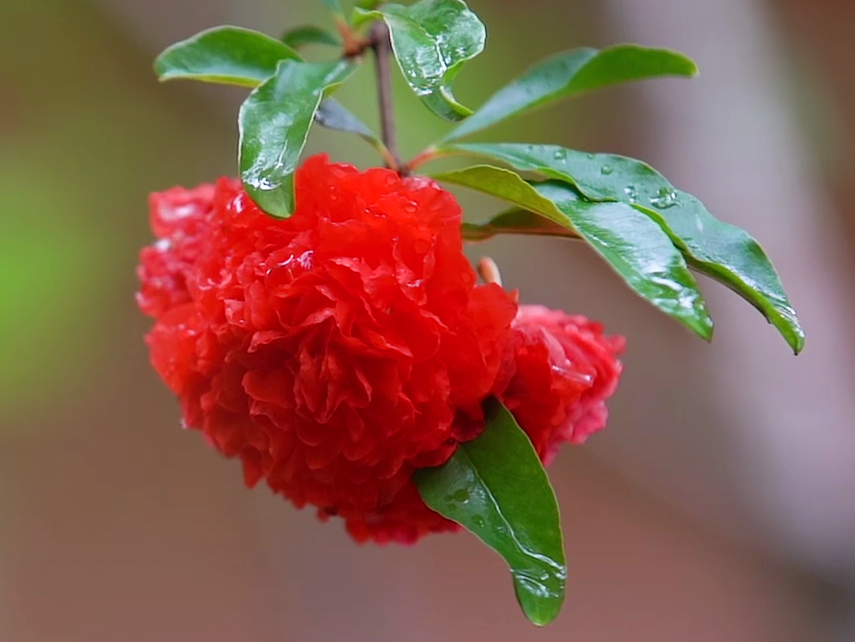
Dadimikusuma 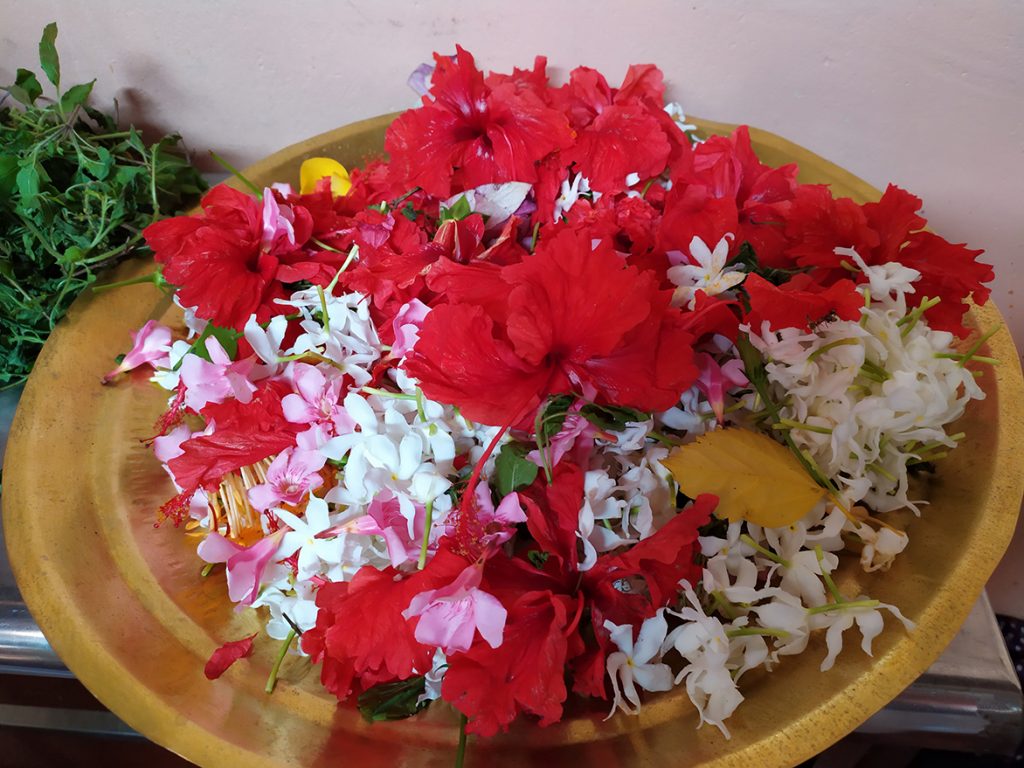
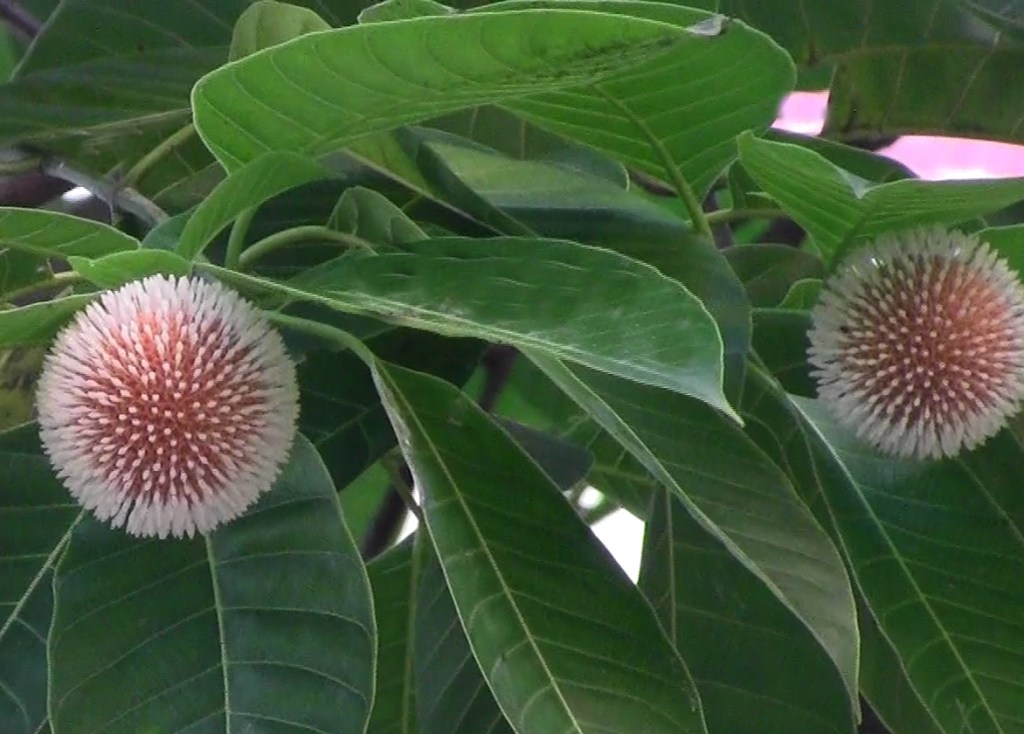
Kadamba 
Champeya
The tiny numerous flowers of teak, coconut, garden palm, and other trees are humming with the butterflies and bees in them.
About a dozen kinds tiny flowers, that can be described in terms of the size of mustard seeds adorn the pathway in the natural growths.
All the shrines in the ashram seem to celebrate the festival of flowers every day. The intention behind the ritual seems to be fulfilled. Buying flowers from elsewhere and doing pookkalams would be an empty ritual. It would be like the story Amma tells of the son who borrowed a cat and put it under a basket before starting Puja rituals; he didn’t know his dead father was doing so with their own pet cat because it was disturbing his puja activity.
A flower is asking of humans, “Why do you need to tear us and give to your god? Can’t your own heart make a flower for your god?” Surely heart-flower is the ultimate offering. And yet, growing them ourselves and offering them does a lot of good to oneself, to nature and to the world.
The flower-activity begins from 4 am every day. Colorful flowers adorn every item in the Kalari. Flowers of chosen colors are used in the homas and pujas, performed several times a day. Long malas are strung for Kali Mata.
Amma’s arati plates themselves look like Pookkalams!
At the end of arati, flowers are offered at Her Lotus Feet as symbol of surrender. And, Amma blesses by splashing handfuls of colorful flower petals on Her children.
The day begins with our flower offerings, and ends with our receiving flowers as blessing.

